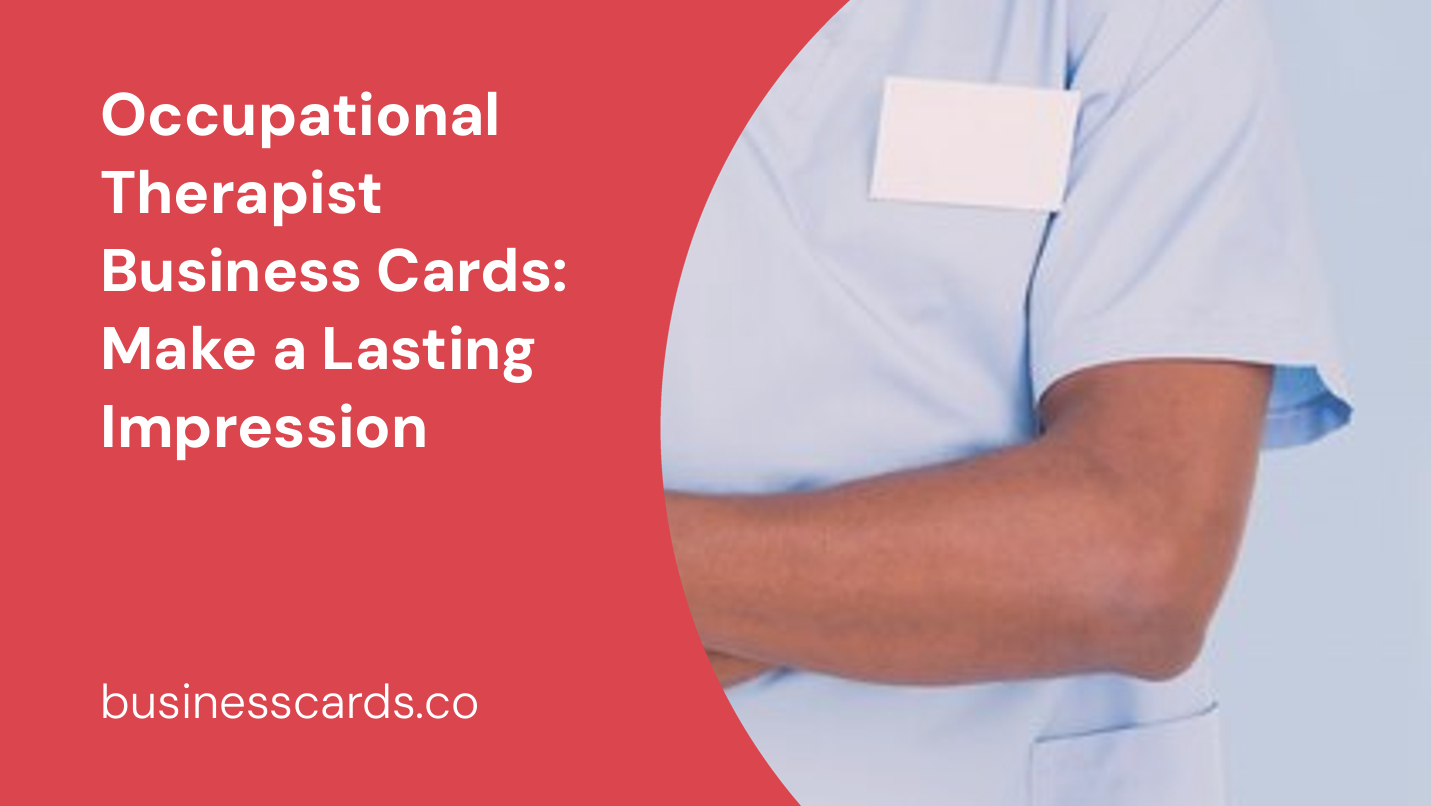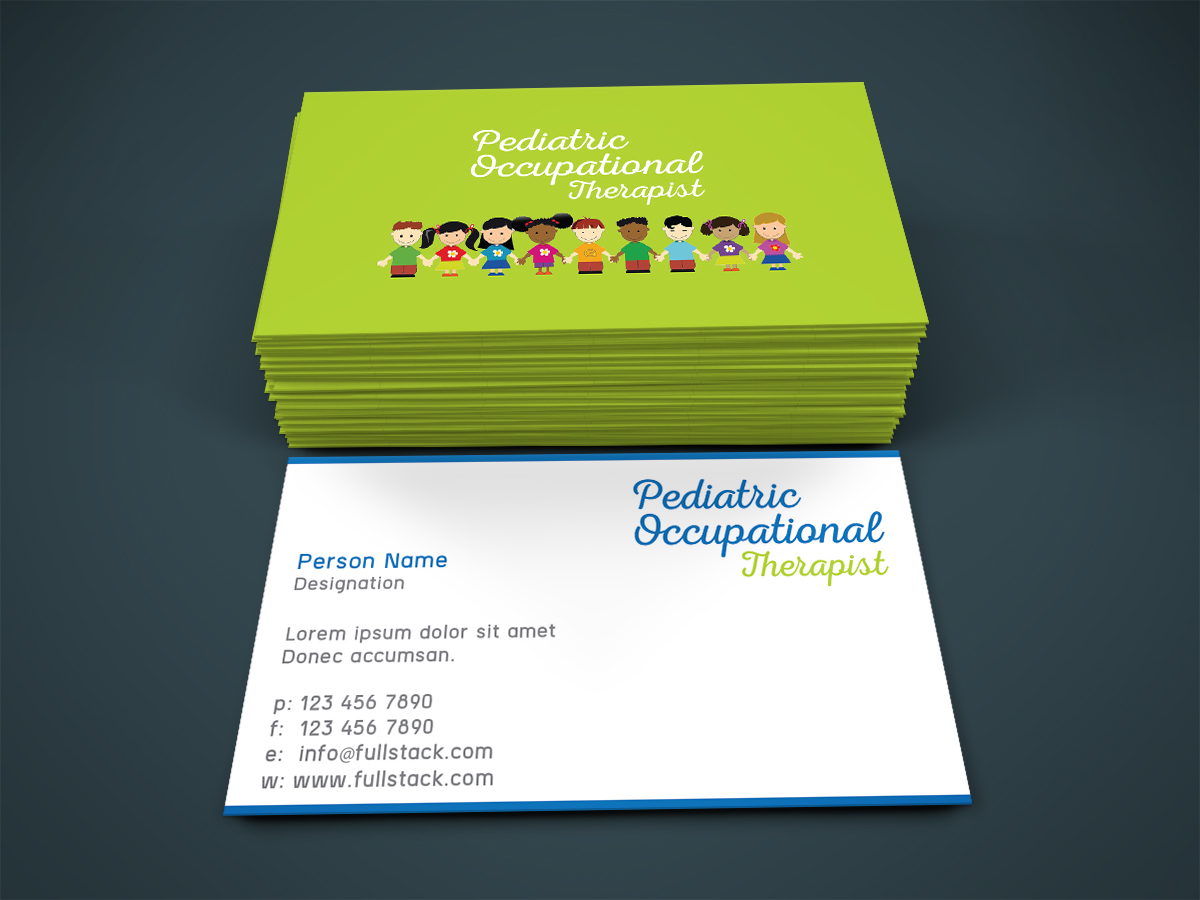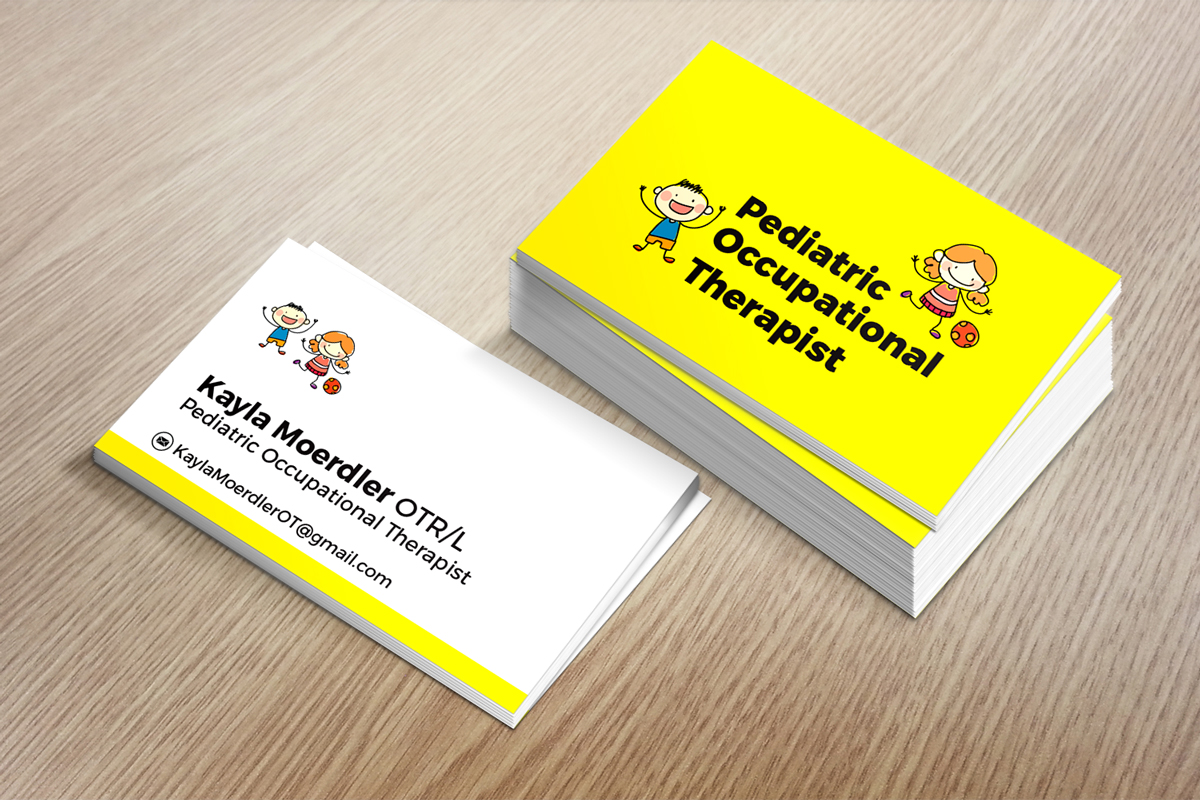
As an occupational therapist, your business card is not just a piece of contact information, but a representation of your professional identity. It is a powerful tool that can leave a lasting impression on potential clients, colleagues, and employers. A well-designed business card can showcase your expertise, professionalism, and personal style, helping you stand out in a competitive industry. In this article, we will explore the importance of occupational therapist business cards and provide valuable tips on how to create an impactful card that reflects your unique brand.
The Importance of Occupational Therapist Business Cards

Business cards have been an integral part of networking and establishing professional connections for decades. In the digital age, where information can be easily found online, one might question the relevance of physical business cards. However, studies show that tangible business cards still hold immense value and are considered an essential tool for networking.
- First Impressions: Your business card is often the first point of contact between you and a potential client or employer. It plays a crucial role in making a positive and memorable first impression.
- Professionalism: A well-designed business card showcases your professionalism and attention to detail. It demonstrates that you take your occupation seriously and care about how you present yourself to others.
- Personal Branding: Your business card is an opportunity to highlight your unique brand identity. It can reflect your style, values, and the type of occupational therapy services you provide.
- Ease of Reference: Unlike digital contact information that can easily get lost in a sea of emails or phone contacts, a physical business card can be easily stored and referenced when needed.
Now that we have established the importance of occupational therapist business cards, let’s dive into the key elements that can help you create an impactful card.
Key Elements of Occupational Therapist Business Cards

When designing your occupational therapist business card, it is essential to consider various elements that contribute to its effectiveness. Let’s explore each of these elements in detail:
1. Contact Information
The primary purpose of a business card is to provide your contact information to potential clients or employers. Include your name, title (Occupational Therapist), phone number, email address, and website (if applicable). It is crucial to ensure that the information is accurate, up-to-date, and easy to read.
2. Branding and Design
Your business card should reflect your personal brand and professional identity. The design should be visually appealing and aligned with your occupation as an occupational therapist. Consider using a color palette that complements your logo, if you have one, and select fonts that are easy to read. Avoid clutter and aim for a clean, professional look.
3. Logo
If you have a logo for your occupational therapy practice, incorporate it into your business card design. A distinct logo can help reinforce brand recognition and add a touch of professionalism. Ensure that the logo is prominent but not overpowering, allowing it to blend seamlessly with the overall design.
4. Tagline
Including a concise and impactful tagline on your business card can instantly communicate your unique value proposition or specialization. For example, “Helping individuals regain independence through personalized therapy” captures the essence of an occupational therapist’s work. A well-crafted tagline can pique interest and leave a lasting impression.
5. Professional Associations and Certifications
Listing relevant professional associations and certifications on your business card can enhance your credibility and establish trust with potential clients or employers. This demonstrates your commitment to ongoing professional development and staying up-to-date with the latest industry standards.
6. QR Codes and Digital Integration
Incorporating a QR code on your business card can bridge the gap between the physical and digital world. By scanning the QR code, potential clients or employers can access additional information about your services, testimonials, or appointment scheduling options. However, ensure that the QR code is easily scannable and leads to relevant and optimized online content.
7. Finishing Touches
Consider adding finishing touches to your business card design to make it stand out. This could include embossing, foil stamping, spot gloss, or unique card shapes. However, be careful not to overdo it, as simplicity often triumphs when it comes to creating a professional business card.
Conclusion
Occupational therapist business cards are an essential element of your professional toolkit. They serve as a powerful marketing tool, establishing your credibility, professionalism, and personal brand identity. By carefully considering the key elements discussed in this article â_x0080__x0093_ contact information, branding and design, logo, tagline, professional associations and certifications, QR codes and digital integration, and finishing touches â_x0080__x0093_ you can create an impactful business card that leaves a lasting impression.
Remember, your business card is a representation of you and your occupational therapy practice. Take the time to design a card that accurately reflects your expertise, values, and personal style. With a well-designed business card in hand, you will be ready to make a positive and memorable impression on potential clients, colleagues, and employers, ultimately furthering your success as an occupational therapist. So, put your best foot forward and create a business card that speaks volumes about your professional identity as an occupational therapist.
Ava Taylor’s passion for branding and marketing shines through in her dynamic writing. She brings a unique perspective with her background in event planning, infusing creativity into her content. When she’s not writing, Ava enjoys organizing community events and gatherings.